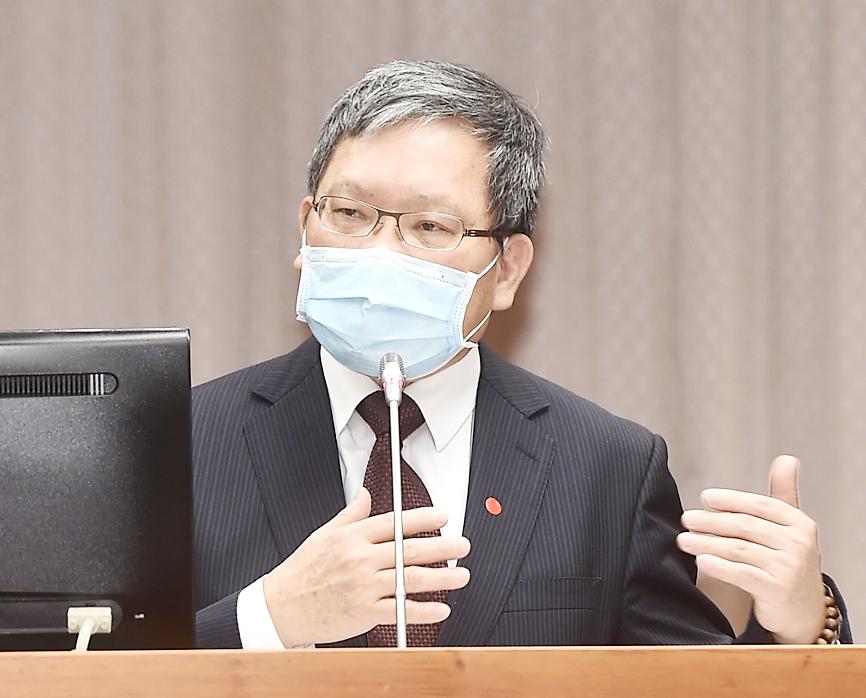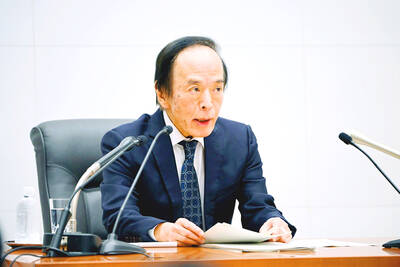Taiwan’s exclusion from the Regional Comprehensive Economic Partnership (RCEP) would have little effect on local exporters, because most firms already have a presence in Southeast Asia to take advantage of the favorable tariff terms there, government officials said yesterday.
Fifteen Asia-Pacific nations on Sunday signed the free-trade deal to form a trade bloc that accounts for nearly 30 percent of global GDP.
Minister of Finance Su Jain-rong (蘇建榮) told a meeting of the legislature’s Finance Committee that tariffs are already exempted on about 70 percent of Taiwanese shipments to RCEP markets.

Photo: Chien Jung-feng, Taipei Times
“The formation of the trade body, which is to expand the scope of tariff concessions [between the 15 member nations] from the current 90 percent to 92 percent, would have a very limited impact on Taiwan’s competitiveness,” Su said.
The difference of 2 percentage points is mild, he added.
Lawmakers from across party lines voiced concern that Taiwan would be marginalized internationally after failing to join the trade body and because of the transition in power in the US after US President Donald Trump lost the election.
RCEP members have negotiated trade terms for the past eight years during which time major Taiwanese companies have made inroads in ASEAN markets, giving them access to free trade, Su said.
The government has also encouraged local companies to diversify their investments beyond China under the New Southbound Policy, he added.
The National Development Council shared similar observations, saying that Taiwan-made semiconductors make up 60 percent of shipments to RCEP destinations and there is no tariff on semiconductors and related products due to international technology pacts and protections.
Some RCEP member nations have lowered tariffs to zero for particular technology products to remain competitive globally, the council said in a statement, explaining why tariffs are already not charged on about 70 percent of Taiwanese exports.
US-China trade tensions and the COVID-19 pandemic have awakened companies to the need for risk diversification and the danger of overdependence on a single market, the council said.
As a result, companies are restructuring their supply chains and speeding up digital transformation, it said.
Global supply realignment and the ability to develop a digital economy might become more important and relevant to supporting the economy than tariff reductions, the council said.

Taiwan’s long-term economic competitiveness will hinge not only on national champions like Taiwan Semiconductor Manufacturing Co. (TSMC, 台積電) but also on the widespread adoption of artificial intelligence (AI) and other emerging technologies, a US-based scholar has said. At a lecture in Taipei on Tuesday, Jeffrey Ding, assistant professor of political science at the George Washington University and author of "Technology and the Rise of Great Powers," argued that historical experience shows that general-purpose technologies (GPTs) — such as electricity, computers and now AI — shape long-term economic advantages through their diffusion across the broader economy. "What really matters is not who pioneers

In a high-security Shenzhen laboratory, Chinese scientists have built what Washington has spent years trying to prevent: a prototype of a machine capable of producing the cutting-edge semiconductor chips that power artificial intelligence (AI), smartphones and weapons central to Western military dominance, Reuters has learned. Completed early this year and undergoing testing, the prototype fills nearly an entire factory floor. It was built by a team of former engineers from Dutch semiconductor giant ASML who reverse-engineered the company’s extreme ultraviolet lithography (EUV) machines, according to two people with knowledge of the project. EUV machines sit at the heart of a technological Cold

TAIWAN VALUE CHAIN: Foxtron is to fully own Luxgen following the transaction and it plans to launch a new electric model, the Foxtron Bria, in Taiwan next year Yulon Motor Co (裕隆汽車) yesterday said that its board of directors approved the disposal of its electric vehicle (EV) unit, Luxgen Motor Co (納智捷汽車), to Foxtron Vehicle Technologies Co (鴻華先進) for NT$787.6 million (US$24.98 million). Foxtron, a half-half joint venture between Yulon affiliate Hua-Chuang Automobile Information Technical Center Co (華創車電) and Hon Hai Precision Industry Co (鴻海精密), expects to wrap up the deal in the first quarter of next year. Foxtron would fully own Luxgen following the transaction, including five car distributing companies, outlets and all employees. The deal is subject to the approval of the Fair Trade Commission, Foxtron said. “Foxtron will be

INFLATION CONSIDERATION: The BOJ governor said that it would ‘keep making appropriate decisions’ and would adjust depending on the economy and prices The Bank of Japan (BOJ) yesterday raised its benchmark interest rate to the highest in 30 years and said more increases are in the pipeline if conditions allow, in a sign of growing conviction that it can attain the stable inflation target it has pursued for more than a decade. Bank of Japan Governor Kazuo Ueda’s policy board increased the rate by 0.2 percentage points to 0.75 percent, in a unanimous decision, the bank said in a statement. The central bank cited the rising likelihood of its economic outlook being realized. The rate change was expected by all 50 economists surveyed by Bloomberg. The